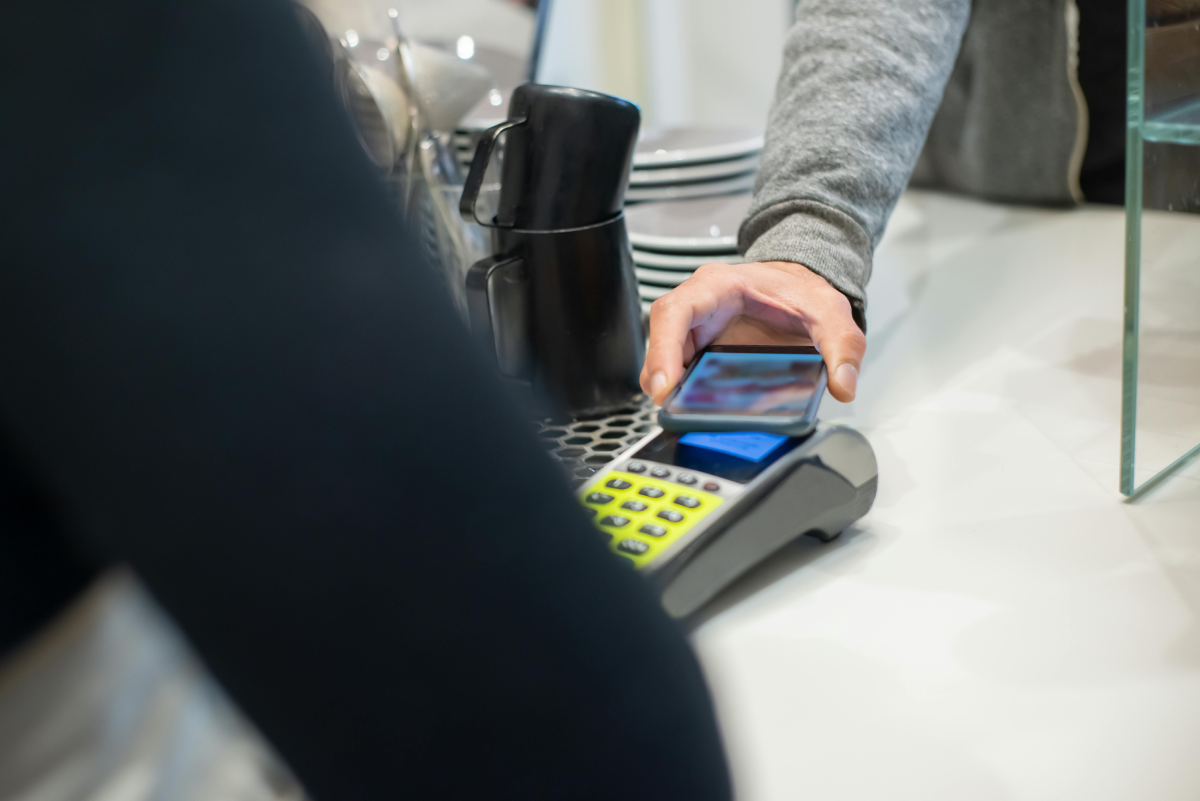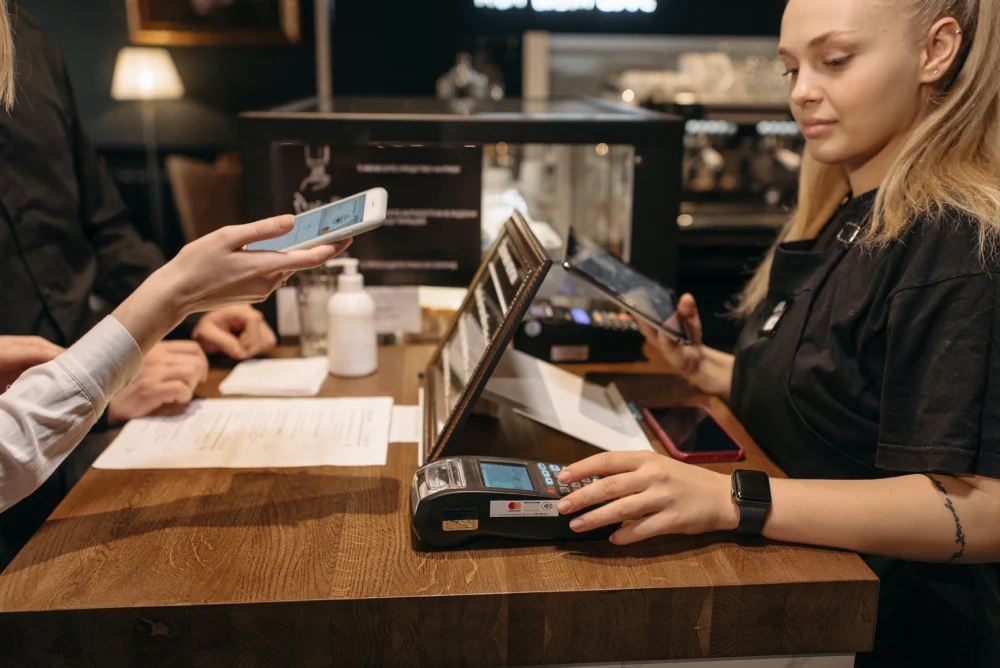Ready to get started?
Get paid faster and save up to 50% on fees with Pay by Bank.
UK businesses are switching to Pay by Bank providers like Atoa to save on fees and get paid faster without relying on card machines. It’s part of a much bigger shift in how money moves. In 2023, 45% of all payments made by businesses were processed using Faster Payments, according to UK Finance. With mobile and online banking now the norm, that number is expected to rise to over 7 billion payments a year by 2033. At the heart of this shift is Pay by Bank, a modern, secure, and incredibly simple way to take payments straight from your customer’s bank account. No card machines, no clunky terminals, no unnecessary fees. Just real-time, bank-to-bank payments that put businesses back in control of their cash flow.
In this guide, we’ll cover everything you need to know about Pay by Bank in 2025, how it works, why businesses are making the switch, and whether it’s the right fit for you.
What is Pay by Bank?
Pay by Bank is a payment method that lets businesses accept payments directly from customers’ bank accounts. Instead of using a card or digital wallet, the customer approves the payment through their own bank’s app or online banking securely and instantly.
Here’s how it typically works:
- The customer scans a QR code or clicks a link
- They select their bank
- They log in securely and approve the payment
- The money is sent straight to the business’s bank account
There’s no need for customers to type in card numbers, download an app, or sign up for anything new. It’s simple, fast, and feels like online banking… because it is.
How is Pay by Bank different from cards, wallets, and bank transfers?
Many business owners wonder how Pay by Bank compares to other popular payment methods. Here’s a quick comparison:
| Feature | Pay by Bank | Card payments | Mobile wallets | Manual bank transfer |
|---|---|---|---|---|
| Fees | Low | High | Varies | Low |
| Speed | Instant | 1–3 working days | Instant | Same day / next day |
| Security | Bank-authenticated | Card data vulnerable | Device-authenticated | Varies by method |
| Hardware needed | None | Card reader required | Sometimes | None |
| Customer effort | Quick + simple | Card entry required | App + device needed | Manual setup required |
Unlike manual bank transfers, which require customers to input your bank details and reference codes, Pay by Bank offers a more guided and seamless experience. It’s secure like a bank transfer, but with the ease and speed of contactless.
Why are businesses switching to Pay by Bank in 2025?
Businesses are choosing Pay by Bank because it solves some of their biggest payment challenges. Whether you’re a local shop, a service provider, or an online business, it gives you more control over your cash flow and fewer headaches with processing fees. Lower fees are one of the biggest draws. Since there are no card networks involved, you don’t pay those high transaction charges that come with card machines. For small businesses, this adds up fast.
Instant settlement is another game-changer. The money reaches your account within seconds of the customer approving the payment. So you’re not stuck waiting days to access your funds. It’s also safer for you and your customers. Payments are approved within the customer’s bank environment, using secure logins like Face ID, fingerprint scanning or passcodes, with Strong Customer Authentication (SCA) built-in. There’s no need to handle sensitive card data or worry about chargebacks.
And best of all? Customers love it too. No apps to download, no logins to remember. Just a familiar, easy flow using their existing bank.
Is Pay by Bank safe?
Yes, in fact, it’s one of the safest ways to accept payments. All payments are processed within the customer’s own bank environment, using the security features their bank already provides. This could include Face ID, fingerprint verification, or multi-factor authentication.
Unlike card payments, which are prone to fraud and chargebacks, Pay by Bank doesn’t involve card numbers or CVV codes. It’s built on open banking technology and leveraged by providers that are authorised by the Financial Conduct Authority in the UK.
Platforms like Atoa also follow strict data protection standards and are ISO 27001 certified, so your business and customer data is always protected.
Who can use it?
If your customers use online or mobile banking (and most do), they can Pay by Bank. It works across most UK banks and requires no sign-up from the customer’s side. Businesses of all sizes can use it, whether you run a salon, a café, a car dealership, or an accounting firm. And because it doesn’t require special hardware, it’s especially handy for businesses on the go or operating remotely.
How to start accepting Pay by Bank payments
It only takes a few steps. It’s much easier with brands like Atoa.
You can:
- Accept payments in-store with QR codes
- Send payment links via SMS, email or WhatsApp
- Add Pay by Bank buttons to your Xero or QuickBooks invoices
- Track all payments in one place, instantly
There’s no lengthy onboarding, no contracts, and no need for a card terminal. Just create an account, generate your first link or QR, and you’re ready to go.
Final thoughts
Pay by Bank is more than a trend, it’s quickly becoming the preferred way for UK businesses to get paid. It’s simple, secure, and works in real time. For businesses, that means less time chasing payments and more time focusing on growth. And for customers, it’s a faster, more secure way to pay. If you’re ready to stop overpaying in card fees and start getting paid instantly, this might be the upgrade your business has been waiting for.
FAQs about Pay by Bank
What is Pay by Bank?
It’s a payment method that allows customers to send money straight from their bank account to yours, instantly and securely, using their banking app or online banking.
Is Pay by Bank free for customers?
Yes. Customers don’t pay anything to make a Pay by Bank payment. Businesses pay a small fee, which is typically lower than card fees.
Can I cancel a Pay by Bank payment?
Customers can’t cancel a payment once they approve it. If they need a refund, the business must issue it.
Does Pay by Bank work with accounting tools?
Yes. Atoa integrates with tools like Xero, Sage and QuickBooks, letting you accept payments through invoices and reconcile transactions automatically.



